In 2015, Jeffrey Tanenhaus rented a Citi Bike in New York City. This was often his commute of choice — in fact, he had grown to love the freedom and control he felt navigating the ever-changing obstacle course between his home and work — but he had different plans for this ride. The bike would go where no Citi Bike had gone before. Suddenly out of work and feeling the urge to find a fresh start, Jeffrey decided to try something unexpected: he would ride a Citi Bike from coast to coast. Was it possible? Would the police be after him for stealing a hefty blue bike? Was he out of his mind?
The trip was not guaranteed to go well. Citi Bikes are notoriously heavy, designed for the abuses of city life, but not for hills. Jeffrey had essentially no experience with bicycle maintenance, was relying on free places to sleep through friends and volunteer hosts found on the Warmshowers.org network, and — perhaps most importantly — he had never attempted anything like this before.
His new book, West of Wheeling: How I Quit My Job, Broke the Law & Biked to a Better Life, tells the story of his journey, the people he met along the way, and how an unlikely bicycle that came to be known as “Countri Bike” helped him chart a course for the next phase of his life. I spoke to Jeffrey from his new home in Tulsa, Oklahoma, a place he fell in love with on his cross-country ride, and where he is starting a local tour business.
Some of your happiest moments of the ride were on the long rail-to-trail projects that have been popping up around the country. I’ve never considered them as anything more than a local feature, but it sounds like they proved to be a real advantage to you on your trip.
These rail-to-trails are essentially old railways that have been torn up — and railroads do not do well uphill. If there is a hill, it’s a very slight grade, you know, 1% maybe, so following a former rail bed basically guarantees a flat ride. In the cases where there is a hill — in my book I mentioned a 23.5 mile hill in Pennsylvania — and that sounds insane, but when it’s at 1%, even on a Citi Bike, it was no sweat because it was very gradual.
Since I’ve finished writing, even more rail-to-trails have opened. They opened up one [the Empire Trail] across New York state, where you can go from Buffalo down to New York City, and then up from New York City to around Plattsburgh. Then that’s connecting into something called the East Coast Greenway, which is supposed to go from Maine to Key West mostly along trails or at least bicycle friendly roads. I think you’re going to hear more about these rail-to-trails or greenways as cycling becomes more popular. If there’s any kind of silver lining to the pandemic it was that it got people on bicycles more just to be outside or at least away from crowded public transport.
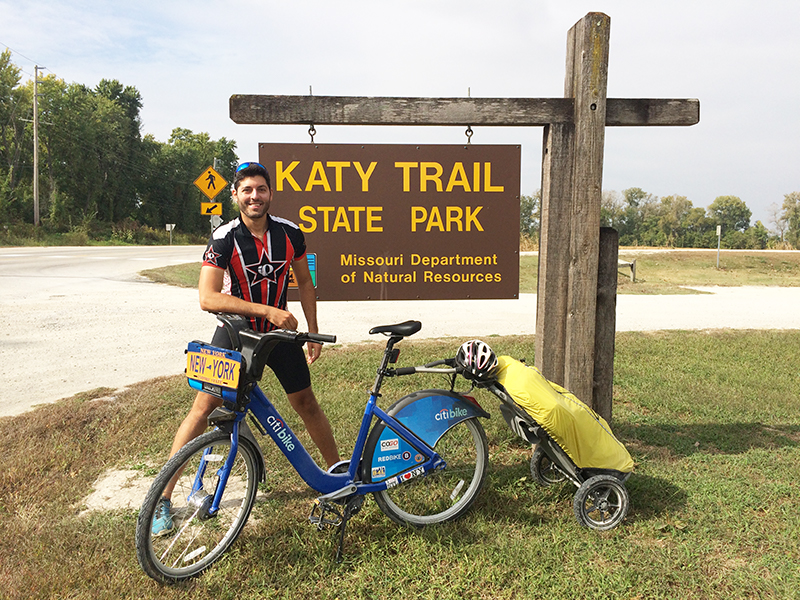
You said in the book that every detour you take is a big choice when you’re on a bike, because that’s all extra effort. But on the other hand, you’re often writing about places that cars don’t go. You saw a side of the US that you wouldn’t have experienced in a car.
There’s back roads and then there’s like really back roads, right? Back roads where cars can’t go because they’re a rail-to-trail or a greenway. The railroads connected all of these little towns where the road through the town was the railroad. So you pass through small towns often that suburbanization has skipped. On a bicycle you can’t be doing 60 miles an hour. You’re going to need to stop in this next little town to see if it has a vending machine, or you hit up the local diner for a chocolate shake. And I was very partial to my chocolate shakes.
You were also partial to beer. Beer comes up a lot in the book. I’m assuming you’re a beer fan, but it seems like there’s a lot of cases where bike culture and beer culture converge in the same place and in the same people. Is there a reason for that?
That’s a great observation. Yes, I am a fan of craft beer, not because I’m snobby, but because I think it tastes better than the mass-produced beers. Although I did hit up the Anheuser-Busch factory in St. Louis and it does taste better from the source, so I’ll give them that. But yeah, I did try to stop at as many breweries as possible just because these craft breweries have interesting people that are hanging out there and they are often bicycle-friendly. Beer brings people together. Food brings people together. A brewery is a great social spot for gathering, and a hyper-local spot as well.
Bicycling also brings people together. It’s a social activity. But it can also be solitary, and I enjoyed the solitary aspect of it as I was trying to get through a pre-midlife crisis and figure out what I wanted to do and where I wanted to do it.
You said that you think of yourself as a bit of an introvert. Did having the bike, having your story, did that help you connect with people that you may not have been able to?
The bike was my icebreaker. The bike looked unusual, so people had questions about it. And then I had a souvenir New York license plate attached to it. So even if they didn’t quite know what the bike was, and maybe were too intimidated to ask, because maybe they were introverts themselves, everybody knew where New York was and the farther west I got, the farther away New York was. It almost became easier to approach me and ask, “Did you really ride that from New York?”
I was almost a little bit worried about advertising the fact that I was from New York. You know, riding through places, rural areas that may associate New York with different values from their “Heartland” values, and that NY license plate may have been an unwelcome sight. But in fact it was not, and it inspired a lot of questions, curiosity, and that created a conversation.
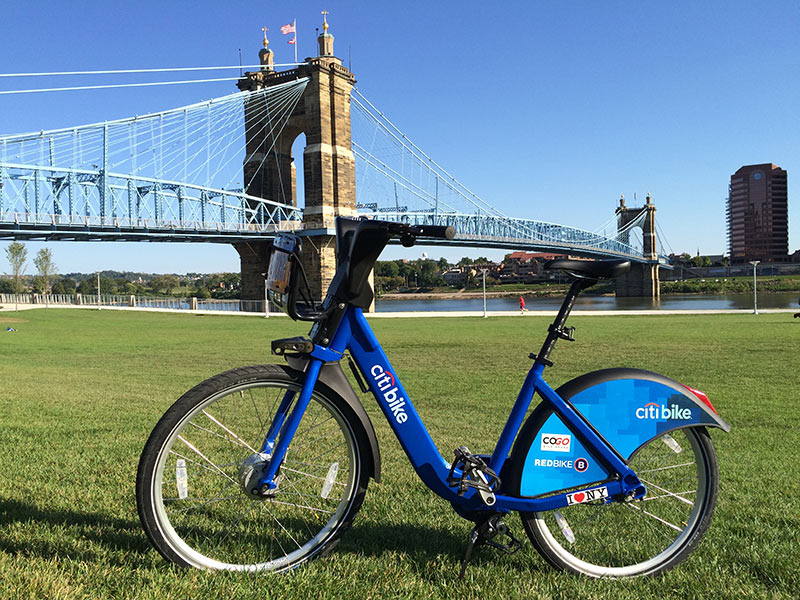
The way you described the cities you visited, it seemed like you were almost shopping for a new place to live. Was that explicitly on your mind?
It was very much on my mind. I didn’t know if it was on my mind on day one, but as I began making progress, I realized that I was auditioning these cities. Could I see myself living in DC? I had spent time there on a government internship in college, but I hadn’t been there in 16 years It’s a pretty cool city. It’s got a very low skyline compared to New York, and I got a good vibe.
Then I ended up in Pittsburgh and liked that even better. It had a grittier spirit that I kind of liked compared to the DC political scene. Maybe Pittsburgh was where I needed to be? Lots of entrepreneurs, it’s a tech-friendly city and also very bicycle progressive. I arrived right on time for a big bicycle event and ended up getting connected with a woman who had started her own bike touring company. I wrote about her story quite a bit in the book, and she became a lifelong friend. So yeah, I was like, “Hey, Pittsburgh is pretty great.”
Then Cincinnati was the next big city and I already had cousins there, but had never visited. When you’re from New York, why would you ever go visit Cincinnati? You should just come visit me because New York is the end-all be-all. But I went on some group rides there and, hey, there’s these cool breweries in this place? It has all this old, historic residential and commercial architecture. These buildings are just crumbling, and they have these adopt-a-building programs. I am really interested in placemaking to make an impact for the community. How cool would that be to fix something up and create a B&B or a brewery or something?
Then there was Louisville, St. Louis, Tulsa, Oklahoma City, Albuquerque, Santa Fe, Flagstaff and Los Angeles. I was hanging out in these places, meeting other bike-friendly, like-minded people and seeing the city through their eyes.
It sounds like you mostly had really great interpersonal experiences across the country, with other bicyclists, Warmshowers hosts, and people in local businesses wherever you went. Did it leave you with any sort of big takeaways about your fellow Americans?
This was all before the election of 2016, which really began to accelerate the partisan polarization. And now there’s disinformation and there’s a pandemic. I mean, there’s some real fractures in our society. But at the time, I certainly was attuned to the fact that I was riding places that were not aligned with me politically, but I was very much not going around sharing my New York City viewpoint of how I think the country should run. So by being a listener and being humble and respectful I was able to have great conversations without getting into politics or religion and things like that.
When you just have a conversation, it can still be personal. I told people where I was from and why I was on this ride, how I was trying to see America. I think that’s something everybody can relate to.
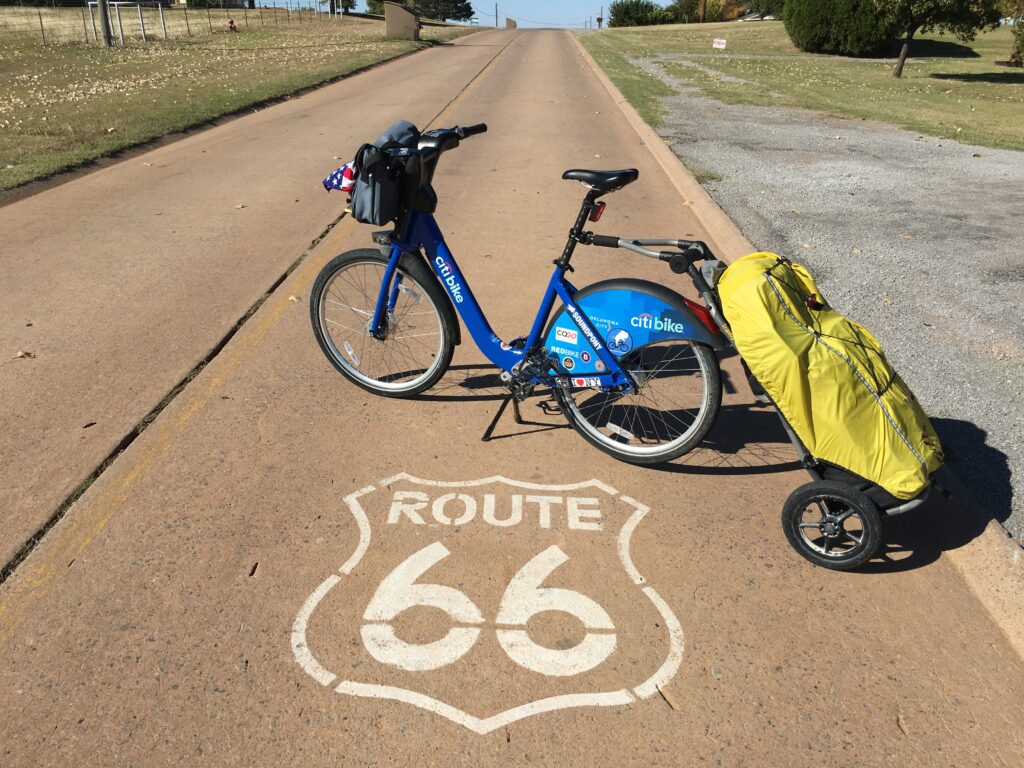
Pie or cake? And where?
I’m still going for the chocolate shake on this. I’m a chocolate shake fan. I know that wasn’t an option, but I was on a mission to find the perfect chocolate shake.
I did have a really good slice of a German chocolate cake in Hermann, Missouri, which was founded by two German immigrants, because they were worried that Philadelphia was becoming too corrupted, so they established this more remote community to better preserve their traditions. About an hour west of St. Louis by car, there’s this fabulous small town right on the Missouri river. They chose that area because it looked like the Rhine.
Did you know that German chocolate cake is actually named after a person from Texas whose last name was German?
Don’t tell Hermann, Missouri.
Did you ever find the perfect chocolate shake?
There was a great one that I wrote about in leaving Pittsburgh, which was a very tough day climbing out of the Allegheny Valley. And getting out of Pittsburgh was a bit of a mess. You’re going through some depressed little suburbs, and not good road conditions. Then I came across a diner creatively called “The Diner,” in Oakdale, Pennsylvania, and had a nice little interaction at that diner and stopped in for a chocolate shake and was so glad I did, because that was a very sweet end to my Pennsylvania experience.
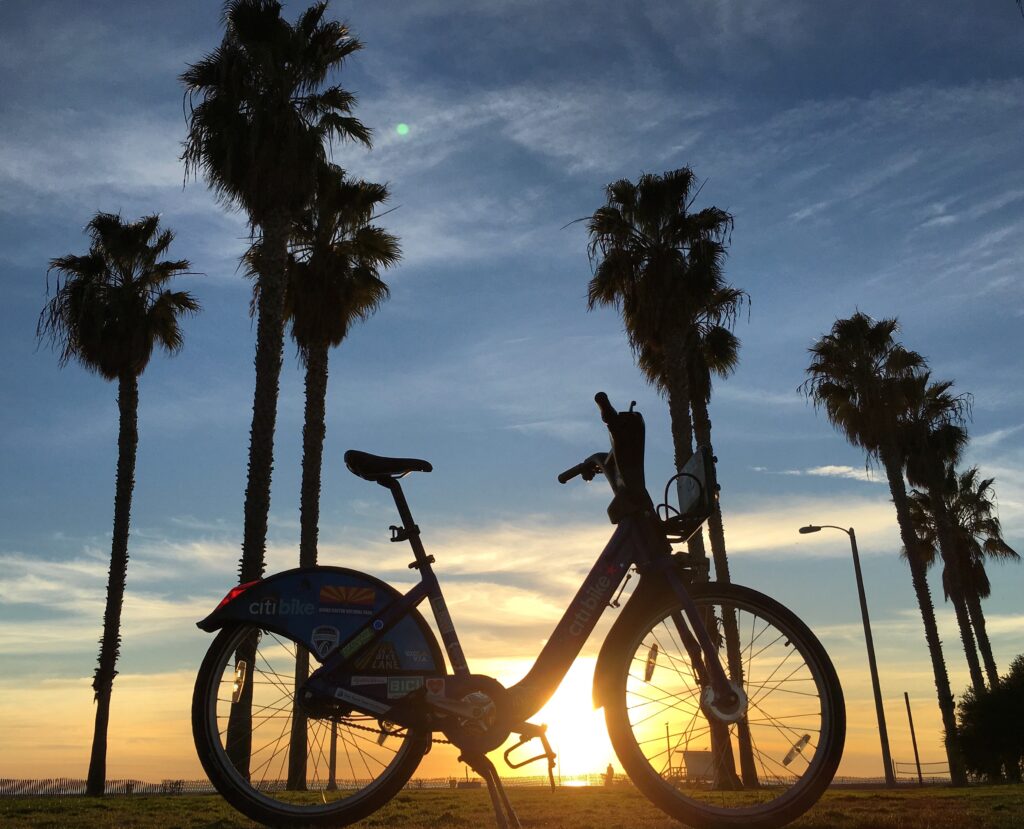
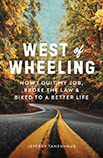
West of Wheeling: How I Quit My Job, Broke the Law & Biked to a Better Life, by Jeffrey Tanenhaus (2021, Houndstooth Press). Order a copy today and support local independent bookshops across the country.
All photos courtesy of Jeffrey Tanenhaus
